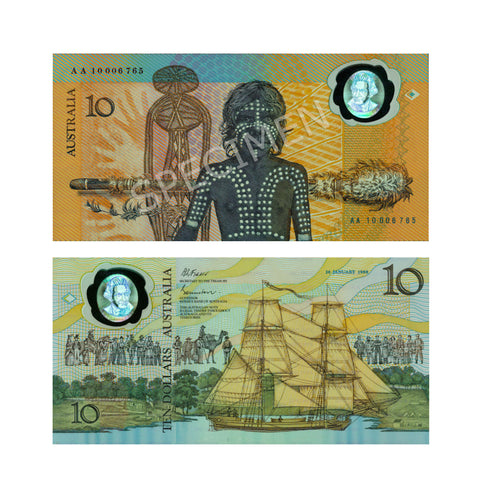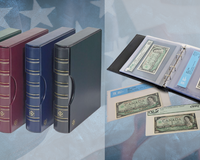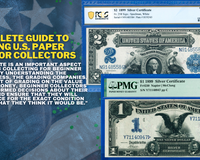Do you ever think paper is the only material for printing money? If you still are thinking like that, I might reveal to you that you are wrong. In contrast, paper banknotes now are considering to be replaced by another better material. This material is just more suitable for printing money. However, still, there aren’t many countries that are using polymer banknotes. But I believe one day, the polymer banknote will cover around the world including the United States.
What is a polymer banknotes?
The polymer was made up of a plastic called BOPP (Biaxially-oriented Polypropylene). Plastic or called polymer is an ultra-thin, transparent film that makes it become a waterproof and unbreakable material like tearing. Also, the polymer was printed with high-teach ink. The Reserve bank of Australia (RBA) has collaborated with the Commonwealth Scientific and Industrial Research Organisation ( CSIRO) and the University of Melbourne to create the new material to destroy the counterfeiting is growing much bigger in Australia in the 1960s. The polymer banknote was issued as currency in Australia in 1988.

The world's first polymer banknotes was the Australia $10 commemorative
Finally, in 1996, the polymer banknote was introduced as the Australia official currency and the entire country switched completely to polymer money. Shortly afterward, many countries also applied polymer banknotes into their currency are Canada, Brunei, Mauritania, New Zealand, Vietnam ...

The official Australia Polymer banknotes issued 1996
The history of polymer banknotes
The most secure form of currency in the world was invented in Australia. It is where filthy money was a big problem in that country in the past. In 1966, Australia switched its currency from pound to chemical currency. As a result, a new series of banknotes with arts on itself was introduced. It is A$10. With higher security features such as using intaglio printed and a metallic thread was hidden inside the banknotes, the governors believed this will be not easy to counterfeit. Unfortunately, this new banknote series has to lead to one of the most extensive historical counterfeitings in Australia’s history a year after that.
 The Australia $10 issued in 1966
The Australia $10 issued in 1966
Soon, in late 1966, the Time Bakery (as the horizontal lines on the Time Bakery on the fake notes were not as same as the lines on the building) counterfeiting incident was discovered. But it was too late, many fake A$10 banknotes were in circulation. Authorities soon spot the forgeries of the fake money. However, anyone who returned a note will not be receiving any real notes. Therefore, many continued to be circulated. Forgeries of the new banknote A$10 was the major problem at that time, the police calculated that $1 million worth, equaled to $12,5 million in present. Its counterfeiting rate was equivalent to several thousand parts per million. This event made Coombs who is the RBA’s Governor have turned his head to the scientist, especially to CSIRO. “Could we make the most secured banknote in the word?” On April 1, 1968, many scientists and chemists came from various countries that were met in Australia to create a secured currency or also called the ‘bank project’. By February 1972, the collaboration has begun to develop polymer banknotes with the help of ultimate security devices. The new banknotes were succeeded to replace A$10 to against the counterfeiting.
The cons of the polymer banknotes.
With the new material for printing banknotes. Sorting machines have the possibility to be replaced or modified. Because the textures of the polymer banknotes can be different from the usual material, paper. Also, its strength has a chance to cause sorting machines to be breakdown or messed up. So the government will consider altering the old machines which can be costly.
Unlikely paper money, polymer banknotes cannot easily be folded. Because it was designed to obtain any attempt to folding it. Also, if you afforded to fold it, this action will result in a permanent crease on the banknotes.
The colors on the polymer banknotes will have a chance to vanish. For example, a test of polymer banknotes was failed when the money started fading and many sellers rejected for using it in Nigeria, Africa.
When polymer banknotes are in touch with water or other liquids, they will be sticky and stuck together, then hard to be pulled apart. Because of its material, the slippiness itself will make it harder to count.
The pros of the polymer banknotes.
17 days- that is the number that paper banknotes can contain many types of viruses, bacteria, and evidence of wastes, and even more. Usually, paper banknotes became an abundant soil for a multiple of bacterias and viruses relied on. In contrast, the polymer banknote itself was made up of plastic, so if it gets any dirty or any liquid on it, cleaning the notes will be totally clear.
Since the production of polymer money started processing. The cost for updating sorting machines was high, however, it was redeemed by reduced processing. Because the plastic material lasts 2.5 times than paper money. So the physical actions like tear won’t be likely as paper money.
Due to the difficult textures like imagines and expensive technology, the forgeries of polymer banknotes were decreased year by year. In some countries after giving up, a remarkable number of counterfeiting banknotes were reducing as opposed to other countries that still using paper money.
Polymer banknotes can withstand any harsh environment whether super hot or freezing temperature. An example from Canada banknotes which can withstand up to 140 degrees.
Each year, many banknotes were buried or burn when they are longer in use. Unlikely paper notes, polymer notes can be recycled, so the resources were saved and there will be less harmful to the environment.
Polymer notes are more easily maintaining, circulating, and using in ATM machines or deposit machines.
Polymer notes also have its own fan, the collectors from other countries will accumulate it, this will help the government gained some extra profits.
Polymer notes weighted lesser than paper notes, so it will be easy to transporting.
Why are the polymer banknotes gradually being more valuable and gained more users?
More than 20 countries has completely applied polymer banknotes as the official currency in their countries including Australia, Bermuda, Brunei, Fiji, New Zealand, Papua New guinea, Romanian, Cananda and Vietnam,... In 2011, The Bank of Canada started issuing the polymer notes after obtaining the reducing of environment impacts. According to the study found, the polymer banknotes has reduced 32% of global warming and 30% of primary energy demand when compared with paper banknotes. In 2013, the Bank of Fiji and Canada switched their banknotes into plastic material. Ultimately, in 2016 the Bank of England released their newest designed for their first polymer note £5 which was featuring Sir Winston Churchill and released in September 2016. And the following banknotes £10 Jane Austen in late 2017 and £20 note in 2020. For collectors, polymer banknotes look much more gorgeous because of the detailed imagines which was create to preventing counterfeiting. Geogre Cubaj the editor of a catalog of World paper money has said “To be secured, money has to stay on the top of new technologies”. Therefore, many countries now are in rush to introduce polymer banknotes including United States.

The Vietnames Polymer Banknotes issued since 2003

Full set of Fiji polymer banknotes issued since 2015

Maldives polymer banknotes issued since 2015

Netherlands Mauritius private issued 2016
Polymer banknotes have a bunch of advantages. They still have some disadvantages. But I think that is not sufficient to reject all the numerous of reasons why we should have at least one note of polymer money in our purse. I believe polymer banknotes will soon dominate the world.










